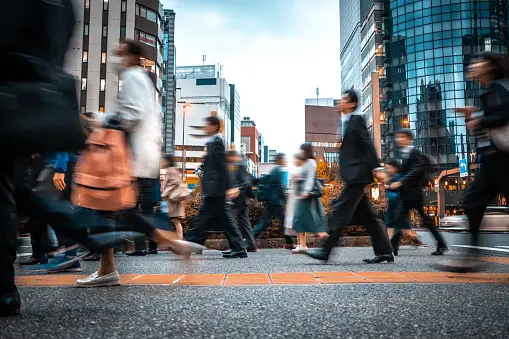Street Photographers Can Be Fun For Everyone
Street Photographers Can Be Fun For Everyone
Blog Article
Street Photographers Fundamentals Explained
Table of ContentsThe Facts About Street Photographers UncoveredThe Best Guide To Street PhotographersWhat Does Street Photographers Do?Some Ideas on Street Photographers You Should KnowStreet Photographers Things To Know Before You Get This
A category of digital photography that records daily life in a public place. The actual publicness of the setup enables the digital photographer to take candid photos of strangers, often without their expertise. Road photographers do not always have a social function in mind, but they prefer to isolate and capture minutes which might or else go unnoticed (Street Photographers).Though he was influenced by a number of those who affected the street photographers of the 1950s and '60s, he was not mainly thinking about catching the spirit of the street. The impulse to visually document people in public started with 19th-century painters such as Edgar Degas, douard Manet, and Henri de Toulouse-Lautrec, who functioned side by side with photographers trying to catch the significance of urban life.
Due to the comparatively primitive innovation offered to him and the long exposure time needed, he struggled to catch the pressure of the Paris streets. He explore a series of photographic approaches, attempting to find one that would permit him to capture movement without a blur, and he found some success with the calotype, patented in 1841 by William Henry Fox Talbot. While the photographers' subject was basically the very same, the outcomes were significantly various, demonstrating the effect of the photographer's intent on the character of the images he produced.
Provided the great quality of his photos and the breadth of material, architects and artists frequently acquired Atget's prints to use as referral for their own work, though commercial interests were barely his main inspiration. Instead, he was driven to photo every last residue of the Paris he enjoyed. The mingled interest and necessity of his objective sparkle through, leading to photos that narrate his own experience of the city, high qualities that expected road digital photography of the 20th century.
The Ultimate Guide To Street Photographers
They reveal the city with his eyes. His work and basic understanding of digital photography as an art kind worked as inspiration to generations of digital photographers that complied with. The future generation of road professional photographers, though they likely did not refer to themselves as such, was introduced by the photojournalism of Hungarian-born photographer Andr Kertsz.
Unlike his peers, Brassa made use of a larger-format Voigtlnder electronic camera with a longer exposure time, compeling him to be more calculated and thoughtful in his practice than he may have been if making use of a Leica.
Cartier-Bresson was a champion of the Leica camera and one of the initial photographers to maximize its abilities. The Leica permitted the professional photographer to connect with the surroundings her comment is here and to catch minutes as they happened. Its relatively little size likewise aided the professional photographer fade right into the history, which was Cartier-Bresson's recommended approach.
Some Of Street Photographers
It is as a result of this essential understanding of the art of photo taking that he is typically credited with uncovering the medium all over again roughly a century given that its development. He took pictures for greater than a half century and affected generations of digital photographers to trust their eye and instinct in the moment.
These are the questions I shall attempt to answer: And afterwards I'll leave you with my very own definition of street digital photography. Yes, we do. Let's begin with specifying what an interpretation is: According to (Street Photographers) it is: "The act of defining, or of making something definite, distinctive, or clear"
No, most definitely not. The term is both restricting and misdirecting. Seems like a street digital photography must be pictures of a roads click to read ideal?! And all road digital photographers, other than for a handful of absolute novices, will fully value that a street is not the essential part to street photography, and in fact if it's a photo of a street with possibly a few monotonous people not doing anything of interest, that's not road photography that's a picture of a road.
5 Simple Techniques For Street Photographers
He makes a valid factor don't you assume? However, while I concur with him I'm not exactly sure "honest public photography" will certainly capture on (although I do sort of like the term "candid digital photography") because "road digital photography" has been around for a very long time, with numerous masters' names affixed to it, so I believe the term is right here to remain.
You can fire at the beach, at a festival, in a street, in a park, in a piazza, in a cafe, at a gallery or art gallery, in a city station, at an event, on a bridge, under a bridge ...
Yes, I'm afraid we worried no choice! Without policies we can not have a definition, and without an interpretation we do not have a genre, and without a category we do not have anything to specify what we do, and so we are stuck in a "regulations interpretation category" loophole!
Street Photographers - Questions

Report this page